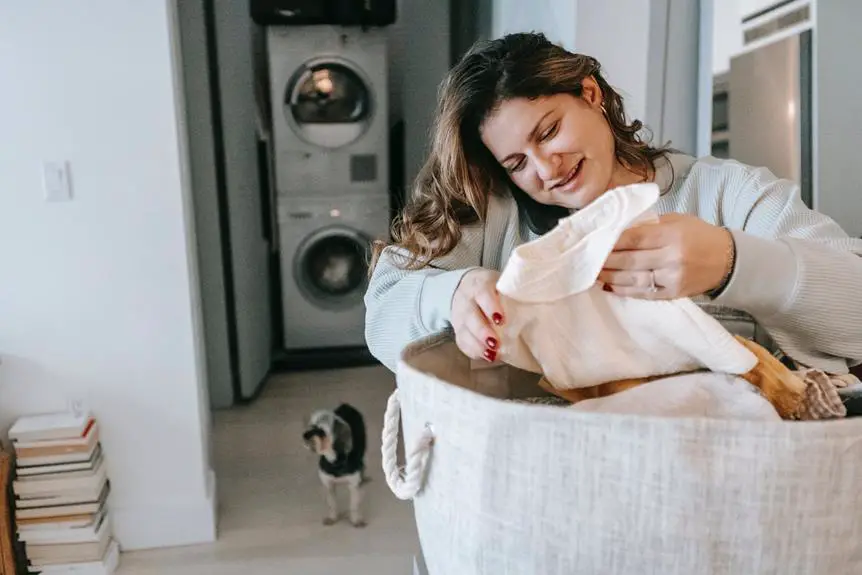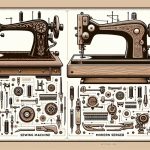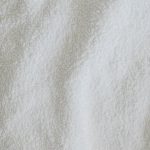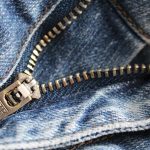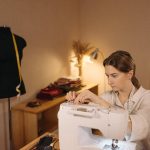Considering the array of stitching options available, choosing between a coverlock and a serger can be a daunting task. Understanding the nuances of these fabric machines is crucial for achieving professional-looking results.
Each machine offers unique features that cater to specific sewing needs. Whether you prioritize precise seam finishing or versatile stitching capabilities, the decision ultimately rests on your specific requirements.
Delving into the details of their functions, capabilities, and maintenance will empower you to make an informed choice.
Let's explore the differences between these two powerful machines to help you select the ideal one for your sewing projects.
Key Takeaways
- Serger machines excel at trimming seam allowances and enclosing raw edges to prevent fraying.
- Coverlock machines are designed for hemming and creating decorative stitches.
- Serger machines are capable of creating a chain stitch, while Coverlock machines offer additional stitches like flatlock and rolled hem.
- Serger machines are ideal for creating clean and professional finishes with overlock stitching, while Coverlock machines offer a wider range of finishing options such as overlock, zigzag, rolled hems, and flatlock seams.
Understanding the Basics
You should understand the differences between a coverlock and a serger before choosing which fabric machine to use.
The basic differences lie in their key features. A serger, also known as an overlocker, is primarily used to trim the seam allowance while enclosing the raw edges to prevent fraying. It creates professional-looking seams and finishes edges simultaneously.
On the other hand, a coverlock machine is designed specifically for hemming and creating decorative stitches on the top side of the fabric, often used in creating professional-looking hems, necklines, and cuffs. Unlike a serger, it doesn't trim the fabric or encase the edges.
Key features of a serger include the ability to stitch, trim, and overcast edges in one step, offering versatility in creating different types of stitches and finishes.
On the other hand, a coverlock machine is known for its topstitching, hemming, and creating decorative stitches with multiple needles and a looper mechanism.
Understanding these basic differences and key features will help you make an informed decision when choosing between a coverlock and a serger for your fabric projects.
Stitching Capabilities
When choosing between a coverlock and a serger, it's important to consider their stitching capabilities. You'll want to compare the stitch types, seam finishing options, and decorative stitching features of each machine.
Understanding these capabilities will help you make an informed decision that aligns with your sewing needs.
Stitch Types Comparison
When comparing the stitching capabilities of a coverlock and a serger, you want to consider the types of stitches each machine can create. Both machines offer various stitch types, but they have some differences in their capabilities. Here's a comparison of the stitch types for coverlock and serger machines:
| Stitch Type | Coverlock Machine | Serger Machine |
|---|---|---|
| 4-Thread Overlock | Yes | Yes |
| 3-Thread Overlock | Yes | Yes |
| Flatlock | Yes | No |
| Rolled Hem | Yes | Yes |
| Chain Stitch | No | Yes |
Both machines provide essential stitches like the 4-thread and 3-thread overlock, but the coverlock machine offers additional stitches like the flatlock and rolled hem, while the serger machine excels in creating the chain stitch. Consider the types of stitches you require for your projects when choosing between these two machines.
Seam Finishing Options
Considering the stitching capabilities previously discussed, you'll now explore the seam finishing options available on both the coverlock and serger machines.
The serger excels at overlock stitching, which trims the fabric edge and encases it with thread to prevent fraying. This creates a clean, professional finish suitable for most seams.
In contrast, the coverlock machine offers a wider range of options, including overlock and zigzag stitching. Additionally, it provides the versatility of creating rolled hems and flatlock seams. The rolled hem neatly finishes lightweight fabrics, while the flatlock seam produces a flat, flexible seam suitable for sportswear and decorative stitching.
Understanding these seam finishing options allows you to select the most suitable machine based on your specific sewing needs and projects.
Decorative Stitching Features
To enhance your sewing projects, both the coverlock and serger machines offer a variety of decorative stitching features through different stitch capabilities.
Decorative stitching techniques such as pintucks, ladder stitches, and rolled hems can be achieved with a coverlock machine, adding intricate details to your garments. The coverlock's ability to create decorative edges and seams is ideal for giving your projects a professional finish.
On the other hand, a serger machine can also create decorative stitches like ruffles, lettuce edges, and wave stitches, offering versatility in fabric embellishment ideas. By utilizing the differential feed and various stitch options, the serger can produce unique textures and finishes, elevating the aesthetic appeal of your creations.
Both machines provide an array of decorative stitching features, allowing you to explore endless creative possibilities.
Seam Finishing Options
If you want to achieve professional-looking finished seams on your garments, using either a coverlock or a serger will provide you with various seam finishing options to choose from. These machines offer a range of features and techniques to ensure your seams are neatly finished and durable.
- Overlock Stitch: Both coverlock and serger machines can create an overlock stitch, which trims the seam allowance and encases the raw edge with thread, preventing fraying.
- Flatlock Stitch: This stitch creates a flat, comfortable seam finish suitable for sportswear and decorative seams. It joins the fabric with the right sides together and encases the raw edges within the stitch.
- Rolled Hem: With the correct settings and accessories, both machines can produce a delicate rolled hem, perfect for lightweight fabrics and creating a professional edge finish on scarves, ruffles, and more.
- Thread Tension Control: Both machines offer control over thread tension, allowing you to adjust it according to the fabric type and desired finish, ensuring even and secure stitching.
Differential Feed Function
To achieve precise control over fabric feeding and prevent stretching or puckering, both the coverlock and serger machines offer a differential feed function. This feature allows you to adjust the feed dogs to move at different rates, which is particularly useful when working with stretchy or difficult fabrics. By using the differential feed adjustment, you can prevent fabric stretching and distortion, ensuring that your seams and hems are smooth and even. Here's a comparison of the differential feed function on coverlock and serger machines:
| Differential Feed Function | Coverlock Machine | Serger Machine |
|---|---|---|
| Adjustment Range | Wider | Narrow |
| Fabric Compatibility | Versatile | Limited to knits |
| Stretch Prevention | Excellent | Good |
The coverlock machine typically offers a wider range of differential feed adjustments, making it suitable for a variety of fabrics, including lightweight and heavily textured materials. On the other hand, the serger machine's narrower adjustment range is best suited for preventing stretching in knit fabrics. Consider your specific fabric needs when choosing between these machines to ensure optimal results in preventing fabric stretching and distortion.
Hemming and Binding Features
When considering hemming and binding features, evaluate each machine's capacity for creating professional finishes on various types of fabrics. Here are some key factors to consider when comparing the hemming and binding features of coverlock and serger machines:
- Stitch Length:
Both coverlock and serger machines offer adjustable stitch lengths, allowing you to customize the length of your stitches based on the type of fabric and the desired finish. Consider the range of stitch length options available on each machine and how well they cater to different fabric weights and styles.
- Thread Tension:
The ability to adjust thread tension is crucial for achieving seamless and neat hems and bindings. Evaluate how easily each machine allows you to fine-tune thread tension to accommodate different types of fabrics, ensuring that the stitches lay flat and look professional.
- Hemming Capabilities:
Assess the machines' hemming features, including rolled hems, blind hems, and flat hems. Consider the ease of switching between hemming styles and the quality of the finished hems produced by each machine.
- Binding Options:
Look into the binding attachments and capabilities of both machines, considering their ability to create clean and durable bindings on various fabric types.
Cost and Maintenance Considerations
Consider the initial investment required for both the coverlock and serger machines, as well as the ongoing maintenance costs, to determine the long-term affordability of each option.
When evaluating cost efficiency, it's essential to weigh the upfront expenses against the long-term care and maintenance expenses. Serger machines generally have a lower initial cost compared to coverlock machines. However, coverlock machines offer more features and functionalities, which may justify their higher price tag for some users.
Maintenance expenses also play a crucial role in the overall cost of owning a fabric machine. Both coverlock and serger machines require regular cleaning, oiling, and potential part replacements. Durability factors, such as the quality of materials and construction, can impact the frequency and cost of maintenance.
Consider the reputation of the brand, customer reviews, and the availability of replacement parts when assessing long-term care.
Ultimately, while the initial investment is a significant consideration, factoring in maintenance expenses and durability can provide a more comprehensive understanding of the overall cost of owning a coverlock or serger machine.
Frequently Asked Questions
Can a Coverlock Machine Be Used to Create Decorative Stitches on Fabric?
Yes, a coverlock machine can create decorative stitches on fabric. It's perfect for your fabric projects, especially for adding embellishments to delicate fabrics. With its ability to create rolled hems and decorative edges, it's a versatile tool.
What Types of Fabrics Are Best Suited for Serger Machines?
For the best results, use stable, medium-weight fabrics like cotton, linen, and knits with a serger machine. Keep in mind that delicate or sheer fabrics may not be suitable due to the machine's limitations.
Are Coverlock Machines Suitable for Creating Rolled Hems on Delicate Fabrics?
Yes, coverlock machines are suitable for creating rolled hems on delicate fabrics. They are ideal for creating ruffles and using multiple threads to achieve a professional finish on various fabric types, making them versatile for different sewing projects.
Can a Serger Machine Be Used for Quilting Projects?
Yes, a serger machine can be used for quilting projects, but it has limitations. While it can efficiently handle quilting techniques, it may not be as versatile as other quilting machine options. Consider alternative quilting tools for more intricate quilting projects.
What Is the Average Lifespan of a Coverlock or Serger Machine With Regular Maintenance?
With regular maintenance, the average lifespan of a coverlock or serger machine is around 5-10 years. Proper maintenance, such as oiling and cleaning, is crucial for ensuring machine longevity and optimal performance.
- How Does Ring Spun Cotton Affect Garment Fit and Shape Retention? - August 13, 2024
- What Are the Challenges in Producing Ring Spun Cotton? - August 13, 2024
- Is Ring Spun Cotton Suitable for Plus-Size Clothing? - August 13, 2024

